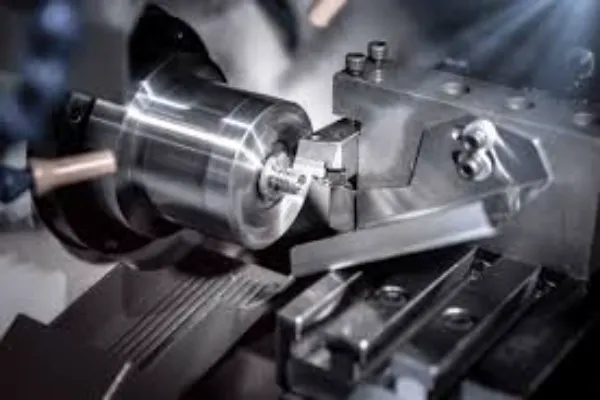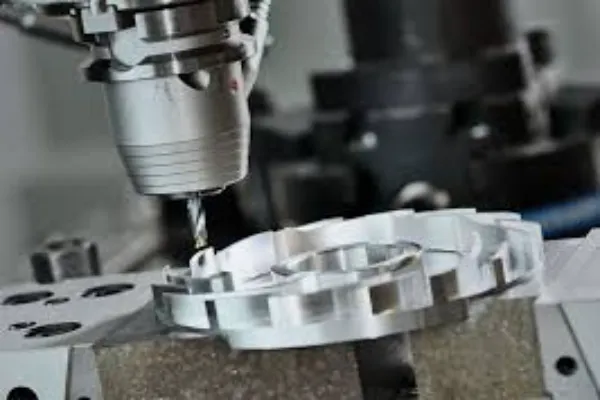CNC Machining Services in 2025: The Complete Buyer’s Guide for Engineers
All this means that selecting a suitable CNC machining service in the current market will necessitate considering more than just the machining capabilities since this approach will enable you to assess the compatibility of a prospective partner with your project needs and organizational objectives. What usually separates a good vendor and a bad vendor is minor but important details that are ignored by many engineers. These can be the readiness of a provider to cooperate with optimizing the design, the readiness to be clear about the source of materials, and the practice of responding to design change or crash deadlines with a lack of warning.
The best CNC partners function as extensions of your engineering team, offering technical consultancy that goes beyond simply following drawings. They maintain rigorous supply chain controls to ensure material traceability, implement robust change management systems to accommodate engineering revisions, and adhere to meticulous measurement philosophies that guarantee part quality. Perhaps most importantly, top-tier shops have clear failure protocols that outline exactly how they address out-of-spec parts, protecting you from costly delays and quality issues down the line.
Capability Checklists: Matching Services to Your Project

When evaluating a CNC machining service’s material capabilities, it’s not enough to simply review their material list. True expertise becomes apparent when you ask for specific case studies demonstrating their experience with your exact alloy or material grade. Super success shops keep the information about the tool life and machining conditions on various materials in full details and by it, they are in a position to optimize process according to your use. They may also suggest other materials that could possibly be more machineable or less costly to use, yet still able to provide you the same performance expectations. Another important aspect to be taken into account is tolerance requirements, since unreasonable accuracy might become very expensive and not yield practical advantages. Tolerance of ±0.010″ or so is just fine with commercial grade items as well as many non-critical parts, but high tolerance parts of ±0.001″ or better are required in aerospace or healthcare industry. The physical actual size of your parts also has a great influence here as both suppleness and price are consequences of work envelop constraint. Innovative cost savings can be achieved with some creative solutions such as dividing big parts into several machined assembles, in terms of money saved, but not performance.
The Hidden Cost Drivers Nobody Talks About
Many engineers are surprised to discover that setup strategies account for a significant portion of CNC machining costs. Traditional shops might spend hours on manual indicating and custom fixtures, while more advanced operations utilize quick-change systems and automated probing to reduce setup times to minutes. Fixturing approaches present another often-overlooked cost factor. Custom fixtures provide excellent repeatability for production runs but carry substantial upfront costs, while modular systems offer flexibility for prototyping at lower initial investment. Measurement methods also dramatically affect both cost and quality assurance. While handheld tools might suffice for loose tolerances, critical features often require coordinate measuring machine (CMM) inspection to verify tight tolerances. Many buyers discover too late that their chosen shop lacks appropriate measurement equipment for their specified tolerances, leading to costly quality issues. One particularly revealing cost differentiator is how shops handle engineering revisions. Clear classification systems that distinguish between minor changes and major requotes can prevent unpleasant surprises when modifications become necessary during production.
Communication Protocols That Prevent Disaster
Effective communication systems separate exceptional CNC machining services from mediocre ones. Drawing errors remain one of the most common and costly sources of problems, with mixed units, unclear datums, and conflicting tolerances leading to expensive mistakes. The best shops implement rigorous drawing review processes to catch these issues before machining begins. Revision handling represents another critical communication area, with top providers maintaining transparent classification systems that clearly explain how different types of changes affect timelines and costs. Perhaps most valuable are the status update protocols that keep clients informed throughout the production process. While basic shops might provide little visibility until parts are complete, leading operations offer daily progress reports with photos or even live machine monitoring. With such transparency, minor problems can be identified and addressed early enough probably preventing several weeks of schedule slip. The way a shop is dealing with non-conforming parts is one of the most indicative factors that demonstrate the quality of communication – the most reliable suppliers have well-documented procedures and direct accordance notifications that allow clients to see all the quality related issues and possible solutions immediately.
Quality Assurance: Beyond the Certificate

The true measure of a CNC machining service’s quality system lies not in their ISO certification plaque, but in their daily process controls and response protocols. Superior shops employ statistical process control (SPC) methods that track machining variables in real-time, allowing them to detect tool wear or machine drift before they impact part quality. These operations maintain comprehensive measurement logs for every critical dimension rather than simply providing a final inspection report. Material traceability represents another differentiator—while many shops provide basic material certifications, the best maintain full heat-lot documentation that follows the material from mill to finished part. This becomes crucial when investigating anomalies or making future production runs. When non-conforming parts do occur, elite machining services follow structured containment protocols that include root cause analysis, immediate notification to affected customers, and documented corrective actions. One medical device manufacturer avoided an FDA audit finding because their CNC partner could produce complete device history records showing exactly which machine produced each component, which operator ran the job, and which measurement equipment verified each critical dimension.
Conclusion: Your CNC Selection Scorecard
Evaluating CNC machining services ultimately requires balancing technical capabilities with operational reliability and business alignment. The most effective selection processes weigh both quantitative factors like machine specifications and qualitative aspects like communication responsiveness. Ten key evaluation criteria emerge: technical consultancy quality, material expertise, tolerance capabilities, change management systems, measurement equipment adequacy, quality documentation depth, logistics coordination, technology adoption rate, capacity transparency, and contract fairness. Red flags are merchants which avoid offering references to comparable projects, shops with unwritten quality operation, or stores which are not so keen to put the most important promises into writing. Smart negotiators concentrate on value drivers such as discounts on long-term relationships, cost savings on shared designs optimization and pricing tiers on volumes. The most effective manufacturing partnerships consider CNC services not as commodity suppliers, but as business partners whose competencies they may utilize to make products better and enter the market faster. Reflecting on such a successful supplier change, as well as posted a veteran engineering manager, indeed, the key machining partner: “It is not about who makes parts, it is about who makes the entire operation smarter.”




